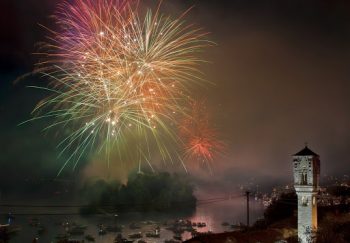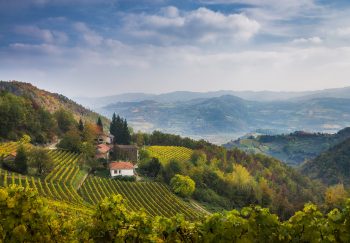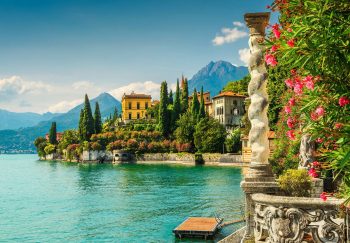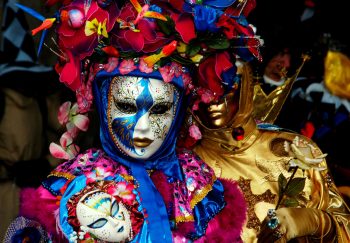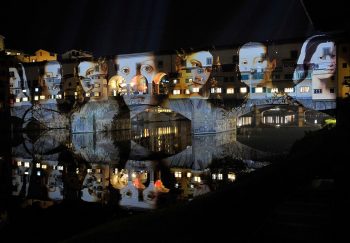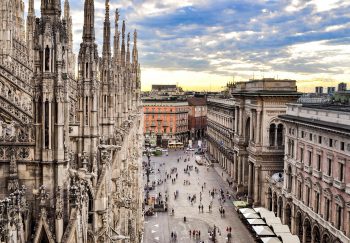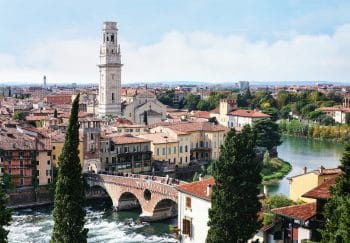After sampling great coffee in bars across Italy, it’s easy to see why excellent coffee is so common. Even the most humble cafe can make a great espresso shot, and there are plenty of well-known cafes in Italy. Rome has two notable cafes – one for their history, the other for their excellent coffee: Sant’Eustachio, and Tazza d’Oro.
This article will not declare one product better than another. While there are some differences in taste, it is a matter of personal preference. It’s easy to walk between the two cafes if you want your own taste test in Rome.
You can also buy merchandise from Tazza d’Oro and Sant’Eustachio, which include coffee beans and sweets with coffee flavor, so you can bring a bit of Italy home.
Which is your favorite between Sant’Eustachio or Tazza d’Oro,
Sant’Eustachio
Sant’Eustachio il Caffe was opened in 1938 at the Sant’Eustachio rione in Rome. It remains in its original, tiny, location until today. The emblem of the rione is the mosaic of a stag that you can see in the entranceway (look down, it’s underneath your feet). This mosaic as well as the semicircular bar that you see when entering are both original.
Sant’Eustachio coffee is sweetened by default. If you prefer your coffee without sugar, please let the guy behind the counter know. Although there are some tables outside, most Italians prefer to sit at the bar and drink their coffee.
Turn to your right and walk inside to find the cashier. You will need to pay first for the coffee drink you choose. They have the usual drinks and a selection of specialty drinks. There are two outside cashiers and one inside. The receipt that you receive from the cashier can be taken to any bar where you are allowed to order. If you do not want your drink pre-sweetened, this is the time to ask for no sugar. zah ZOO
Sant’Eustachio is known for: Their Crema. The cream that is atop Sant’Eustachio coffees has been the subject of much writing. It’s that thick layer of foam that skilled baristas can make from just coffee and water. Is that it? Many believe Sant’Eustachio “cheated” by adding an extra element, such as egg yolks or baking powder. But they have a wall surrounding their espresso machine to prevent anyone else from seeing it (AKA verifying or denial). The result is amazing, no matter what they use or don’t use.
Tazza d’Oro
Antigua Tazzadoro was established in 1946 and is within easy reach of the Pantheon. You can smell and sometimes even see the roaster in-house through the small shop behind the cashier. Partly, the sign is in Spanish and declares the coffee “el best del mundo”. This is a reference to the majority of the countries where the beans are grown. The product is 100% Italian.
Tazza d’Oro’s espresso machines are clearly visible. The espresso is served without crema, which is a good thing. However, it’s usually darker and more robust than the average shot. This is the way Romans like it.
You can enter Tazza d’Oro through several doors. The ones to the left of the corner will take you directly to the cashier. You will receive a receipt for giving to the person behind the bar after you have paid for your drink. Tazza d’Oro has a larger space than Sant’Eustachio. There’s often enough space along the bar to exchange your receipt for your drink. You can also add sugar to your drink here.
Tazza d’Oro is famous for: Their granita di caffe. A rich, creamy coffee slushy layered with whipped cream is the best choice for caffeine in warmer climates. This is not coffee-flavored crushed ice. It’s flavorful (and sugared) Tazza d’Oro espresso that’s been frozen. The coffee is then poured into cups and topped with thick whipped cream. It can be used as a snack, a dessert, or as a main course. It’s also a summer must-have.
